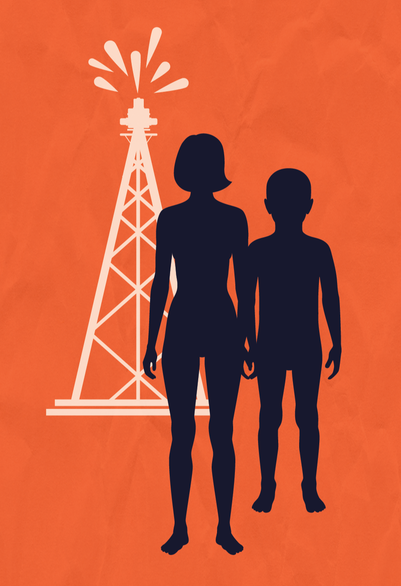PERMANENTLY INCOMPATIBLE:
|
Oil companies have been allowed to reap billions, at the expense of our health. It's time to say now more and put public health & racial justice over Big Oil’s profits.
Frequently Asked Questions
Why is oil and gas drilling near homes and schools a problem for health?
Oil companies use tens of thousands of gallons of toxic chemicals that pollute the air and land. These chemicals are highly flammable, known to cause chronic health issues and can harm fertility and unborn children. When we allow them to drill in our neighborhoods, we are exposed to all those chemicals, putting our health and safety at risk. Children are most susceptible to damage from these toxins because their bodies are smaller and still developing. Low levels of chemical and air toxin exposure over long periods of time have been shown to significantly damage childhood development and increase the risk of chronic diseases like cancer and asthma.
What are some of the more common chemicals that are used and stored at drill sites? How do they affect health?
Oil companies use tens of thousands of gallons of toxic chemicals that pollute the air and land. These chemicals are highly flammable, known to cause chronic health issues and can harm fertility and unborn children. When we allow them to drill in our neighborhoods, we are exposed to all those chemicals, putting our health and safety at risk. Children are most susceptible to damage from these toxins because their bodies are smaller and still developing. Low levels of chemical and air toxin exposure over long periods of time have been shown to significantly damage childhood development and increase the risk of chronic diseases like cancer and asthma.
What are some of the more common chemicals that are used and stored at drill sites? How do they affect health?
- Methanol: A flammable air toxin that can cause headaches and dizziness
- Hydrochloric & Hydrofluoric Acid: Chemicals that cause skin burns even at low concentrations.
- Endocrine Disrupting Chemicals: These substances can harm the normal function of the reproductive system and fertility. They can also harm unborn children.
- Volatile Organic Compounds (VOCs): These chemicals irritate the skin, eyes and lungs and have been associated with an increased risk of cancer.
- Silica Sand: This substance can cause silicosis, a lung disease and cancer.
- Hydrogen Sulfide: This gas is emitted in the process of oil drilling and can cause nausea, headache and dizziness
in low concentrations, and shock, coma, and death in high concentrations.
Take Action Now

Send an email to Los Angeles County Supervisors and the Department of Regional Planning today saying you support a policy to phase out oil drilling.
